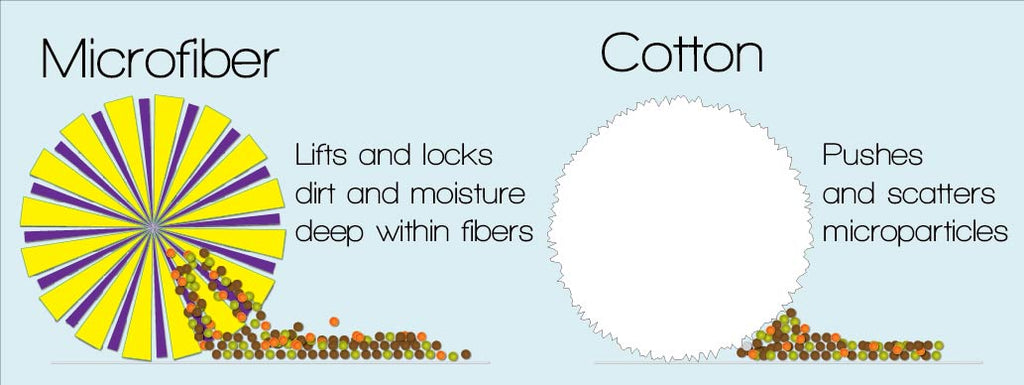Microfiber Material
MICROFIBER MATERIAL
In order to qualify as a microfiber, the individual filaments composing the yarn used in the weaving process must weigh less than 1 gram per 9000 meters in length. This is a density measurement, but when translated into thickness is far less than the diameter of a human hair, it is actually thinner than a strand of silk. Fibers are combined to form yarns. Our most common microfiber yarns are made by joining 72 or 144 fibers together. Yarns are knitted or woven in a variety of constructions. While many microfibers are made of polyester, they can also be composed of polyamide (nylon) or other polymers.
Most microfiber products manufactured by Eurow are made of conjugated fibers. The typical composition is 80% polyester, 20% polyamide. Although more expensive to manufacture than our typical competitors' product, we found out that our 80/20 mix is optimum in cleaning applications.
When a high-quality microfiber is combined with the right knitting/weaving process, it creates an extremely effective cleaning material. This material can hold up to seven times its weight in water. Microfibers are also used for special cleaning applications, because of their exceptional ability to absorb oils.
The polyester gives the structure to the microfiber fabric, the polyamide gives its absorbency. During the manufacturing process, after weaving, generally during the dying process, the fabric is undergoing a chemical treatment in order to split the fibers. This results in an augmented surface of contact, giving the microfiber fabric its exceptional water retention and dirt grabbing abilities. The picture below illustrates the increased contact surface of a microfiber cloth versus cotton.

Unlike cotton, which pushes dirt and dust in small piles, microfiber actually lifts and traps the particles into its fine fibers. Microfiber not only leaves a dust free, lint free and streak free shine but also helps eliminate and reduce allergens from your home or car. This revolutionary fabric is exceptionally soft yet amazingly functional. Used most commonly for cleaning purposes, microfiber is highly absorbent, accumulating liquids, dust, and debris unlike any other synthetic or natural materials available. This magnetic property makes it a popular choice for dusting as it reduces the number of surface and airborne allergens.
Microfiber cloths are eco-friendly because they reduce water usage, reducing the need for cleaning chemicals and paper towels.
Microfiber tend to be extremely durable and resilient. Wash and reuse hundreds of times, they will outlast your traditional cotton towels. Do not use fabric softener when washing as this clogs the cloth and reduces its efficacy.
